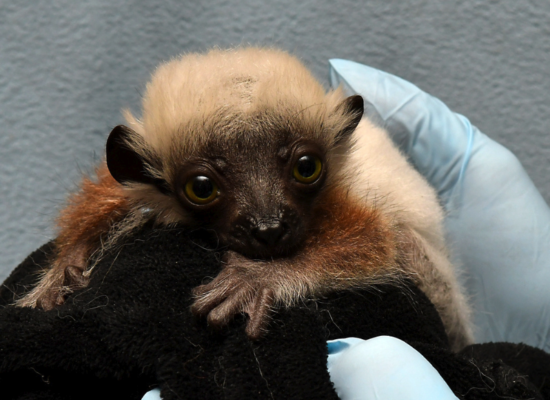It’s birth season here at the Duke Lemur Center!
Birth season began in December with the arrival of Elagabalus (“Gabe”), an endangered sifaka born December 23! Different species breed and give birth at different times, so infants should continue arriving through July and even August, concluding with the last mouse and dwarf lemur births. As birth season draws to a close, the cycle begins anew, kicking off with breeding season for sifaka.
Bookmark this page and check it often. Not only will we link to new written content, but we’ll also add gallery images of our infants as they arrive!
Gabe, Coquerel’s sifaka (endangered) – 12/23/17 (also covered in the Duke Chronicle)
Gellar, blue-eyed black lemur (critically endangered) – 3/14/18
Hamill, blue-eyed black lemur (critically endangered) – 3/23/18
Ranomasina, blue-eyed black lemur (critically endangered; c-section birth) – 4/12/18
Helene and Harriot, twin black and white ruffed lemurs (critically endangered) – 5/6/18
Judith and Mae, twin red ruffed lemurs (critically endangered) – 5/14/18
Bee Balm, Teazel, and Pumpernickel, triplet grey mouse lemurs (least concern) — 7/24/2018
How does the DLC decide which lemurs to breed?
Click here to learn the answer!
![]()
How do the DLC’s lemurs get their names?
Click here to learn the answer!

How involved are male sifakas in caring for their offspring?
Click here to learn the answer!
![]()
What is “baby watch” like?
Click here to learn the answer!
Did you know…
It costs $8,400 per year to feed, house, and care for each lemur at the Duke Lemur Center. Please consider making a donation or symbolically adopting a lemur today. Your gift at any level makes a difference!
![]()
Have a question of your own?
Are you dying to know something baby-related? Send us your questions via the form below. We can’t promise to feature them all, but you might just see them posted on the blog!
The last question is for visitor verification – to confirm that you’re human, not a spam robot.
[cforms name=”Submit A Question”]



